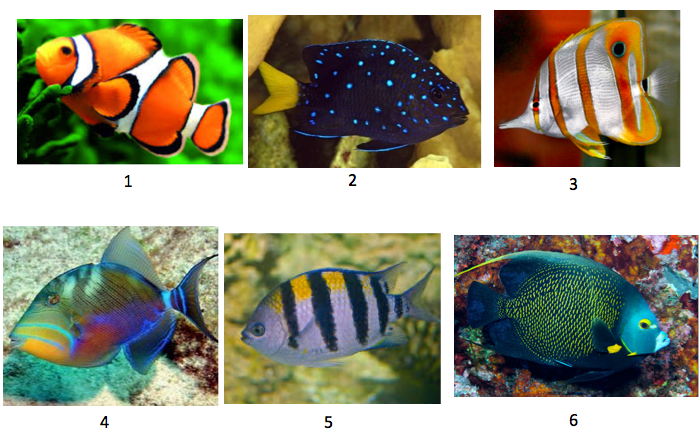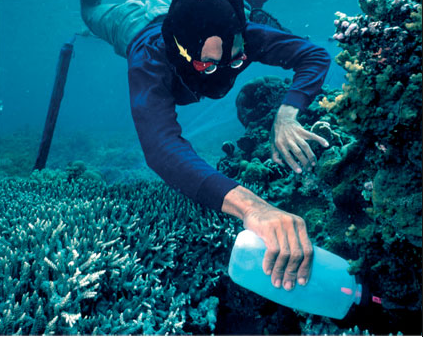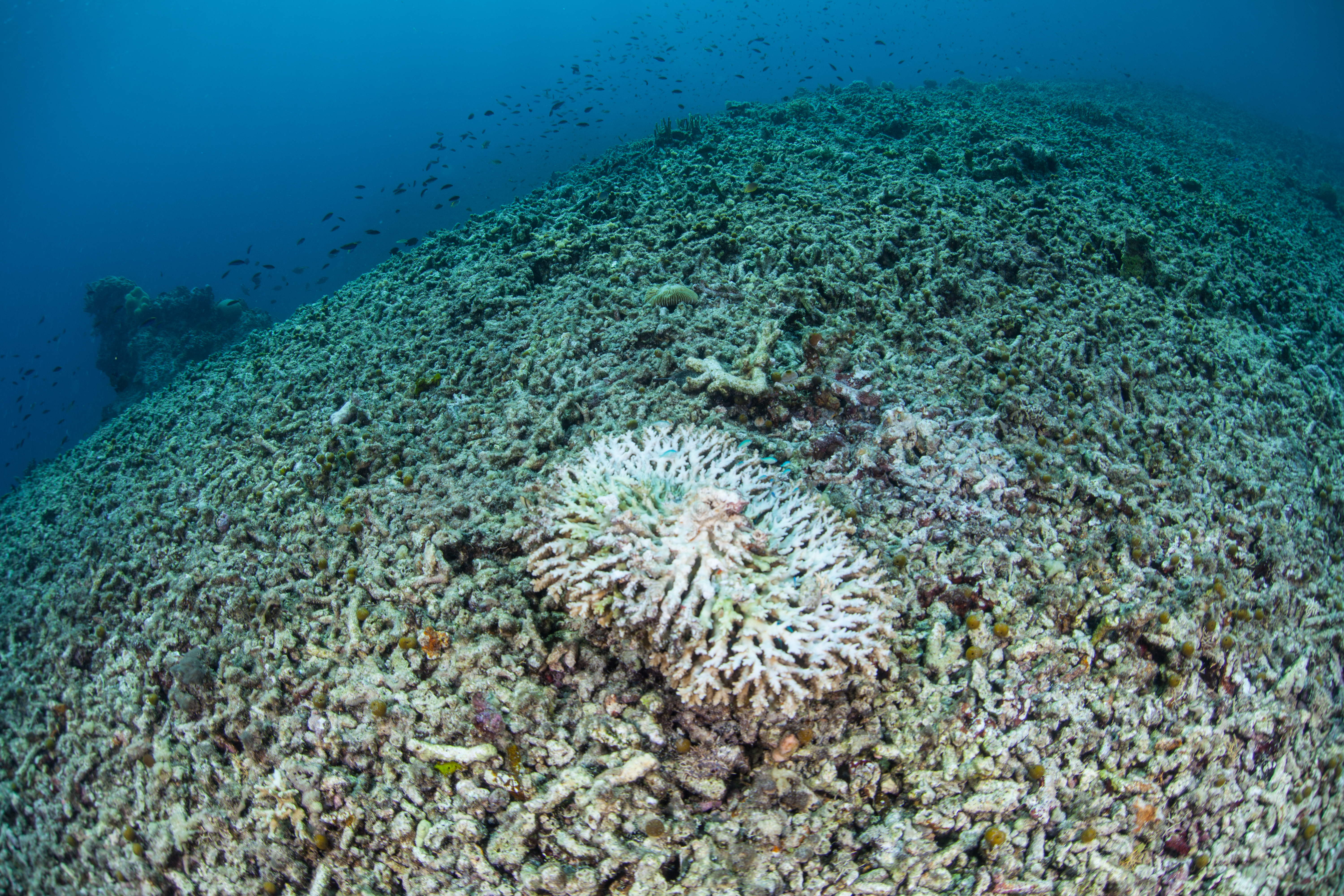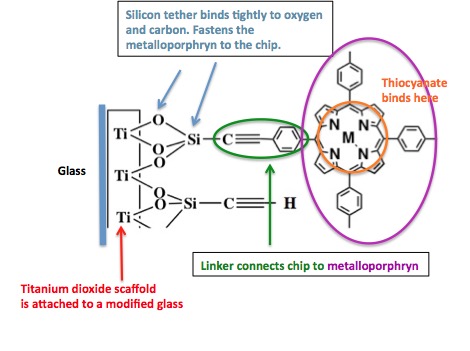
How many of these tropical fish can you name? If you're an avid snorkeler or scuba diver, probably all of them (1). Seeing them in their natural habitat - a coral reef - is an amazing experience. But, the fish that you might see in salt water aquariums (usually not these) may have gotten there in a way that is also amazing, but not in a good way.


This is because of a barbaric method of catching tropical fish, which not only kills many of the fish before they get to your tank, but also does significant damages to coral reefs—about the last thing the world needs. The method is called cyanide fishing, and it is comparable to slash and burn agriculture that threatens rain forests.

Cyanide Fishing - An ecological travesty Photo: Vice
Above is an example of how it is done. In order to make it easier to collect tropical fish, divers swim down to shallow reefs with a bottle of cyanide solution, and spray around the reef—the home to an enormous variety of tropical fish. The cyanide stuns the fish, making it easy to collect them. Then they are brought to the surface, where they are revived in sea water. Some of them recover, some don't. But the real damage is done to the reef. The fish at least have a fighting chance, but the reefs do not. Cyanide fishing is one of the causes of coral bleaching, which is occurring at an alarming rate in many tropical waters. It is estimated that 500 metric tons (2,3,4) of cyanide is used annually in the Philippines alone.

A cyanide-bleached reef in the Philippines Photo: Shutterstock
So, how do you stop this abomination? It is illegal, but much of Southeast Asia - the area where most cyanide fishing takes place - is impoverished. The combination of a $200 million global market for pet tropical fish (5), and poverty make poaching of these fish inevitable, and enforcement of this illegal practice a real challenge. But now, some clever analytical chemistry, which was reported at the 2017 American Chemistry Society meeting in San Francisco may provide a tool to identify fish that were caught in this manner, and identify areas where it was used.
The research, which makes use of the disciplines of analytical chemistry, toxicity, and metabolism, was presented at the meeting by Professor Clifford Murphy of Roger Williams University. Murphy and colleagues described a very sensitive method of detection, which makes use of dye-sensitised solar cells, can measure low concentrations of thiocyanate in water.
An enzyme in the fish called rhodanase is known to detoxify cyanide by converting it the less toxic thiocyanate anion, so the detection of thiocyanate, either in the fish (3) or the water near the reef is evidence that cyanide was used. Murphy's group invented an easy and sensitive method to detect thiocyanate at concentrations that are up to three-times lower than current methods. The method employs electrochemistry, and involves simply dipping the detector into the water and observing a change in color and/or electrical current – a positive sign for thiocyanate.
"If you're going to forensically determine that a fish has been caught by cyanide fishing, it would be really helpful to have a portable device so you can test for it on site when fishing boats return to the docks."
Professor Clifford Murphy
Here's how it works.
Porphyrins are structurally unusual, but essential class of biomolecules, which are miracles of nature that are responsible for multiple life processes in animals and plants. They consist of four pyrrole rings that are connected in a way that all four nitrogen atoms are pointing at the cavity in the middle of the molecule (Figure below). Metal ions fit into the cavity, and are held in place by the nitrogen atoms, a type of binding called coordination. The complexes of metals and porphyrins, which are called a metalloporphrin, are ubiquitous and biologically essential. They act as transporters, delivering the metal to the site that it is needed to perform a specific function. For example, iron—the metal in hemoglobin—has a strong affinity for oxygen, so it is not surprising that hemoglobin is the transporter of oxygen in the blood of vertebrates. When the metal is magnesium, the function is different conversion of light into energy (photosynthesis).

Murphy and his colleagues described a very sensitive method of detection, using materials similar to dye-sensitized solar cells, can measure low concentrations of thiocyanate in water.”. When thiocyanate is present, it binds to and reacts with the iron in the metalloporphrin. The sensor turns from purple to gray and generates a tiny electrical current. Measurement of the amount of current can quantitatively determine the amount of thiocyanate that is present in the water. Very cool.

Schematic drawing of the thiocyanate detector. Courtesy of Dr. Clifford Murphy
The sensor can be used in either of two ways. First, it can detect thiocyanate in the ocean, which can identify areas where cyanide fishing have been used. Murphy's group tested this by collecting water samples from Narragansett Bay. They added different amounts of thiocyanate and dipped the sensor into the salt water, and determined that it could measure thiocyanate concentrations in the range of 1 to 5 parts per billion, about 2-3 times more sensitive than previous detection systems.
Second, the sensor can also be used to identify which fish have been caught with cyanide. Fish detoxify cyanide rather slowly (over the course of a few days), and excrete the thiocyanate in urine. So, when a fish is placed in clean water, the absence or presence of thiocyanate is a surrogate marker for whether cyanide fishing was used to catch it.
Good for them. Our coral reefs are in bad enough shape in many areas of the world. We do not need to make things worse by dumping 500 tons of cyanide into the ocean, and killing healthy reefs so that people can have pretty fish tanks. Enough already.
Notes:
(1) Here are the answers:
Note: The fish in the photos are not meant to be a representation of those that are found in aquariums, or were necessarily caught using cyanide. They are just some of my favorites.
- Clown fish
- Yellow-tailed damselfish
- Copperband butterfly fish
- Queen triggerfish
- Sergeant Major
- French Angelfish
(Anyone have a favorite snorkeling site they'd like to share?)
(2) Rubec PJ, Cruz F, Pratt V, Oellers R, McCullough B, et al. (2001) Cyanide-free net-caught fish for the marine aquarium trade. Aquarium Sci Conserv 3: 37–51.PJ RubecF. CruzV. PrattR. OellersB. McCullough2001Cyanide-free net-caught fish for the marine aquarium trade.Aquarium Sci Conserv33751
(3) Sadovy YJ, Donaldson TJ, Graham TR, McGilvray F, Muldoon GJ, et al. (2003) While stocks last: The live reef food fish trade: Asian Development Bank, Philippines. 169 p.YJ SadovyTJ DonaldsonTR GrahamF. McGilvrayGJ Muldoon2003While stocks last: The live reef food fish trade: Asian Development Bank, Philippines169
(4) deRivera C, Hitchcock N, Teck S, Steves B, Hines A, et al. (2007) Larval development rate predicts range expansion of an introduced crab. Marine Biology 150: 1275–1288.C. deRiveraN. HitchcockS. TeckB. StevesA. Hines2007Larval development rate predicts range expansion of an introduced crab.Marine Biology15012751288
(5) Some of the fish caught in this manner are also eaten.
Source: Clifford B. Murphy, Clifford J. Timpson “Method and Device for Detecting Thiocyanate Ions in Marine Environments”, U.S. Patent Application 62411031, October 21, 2016.



